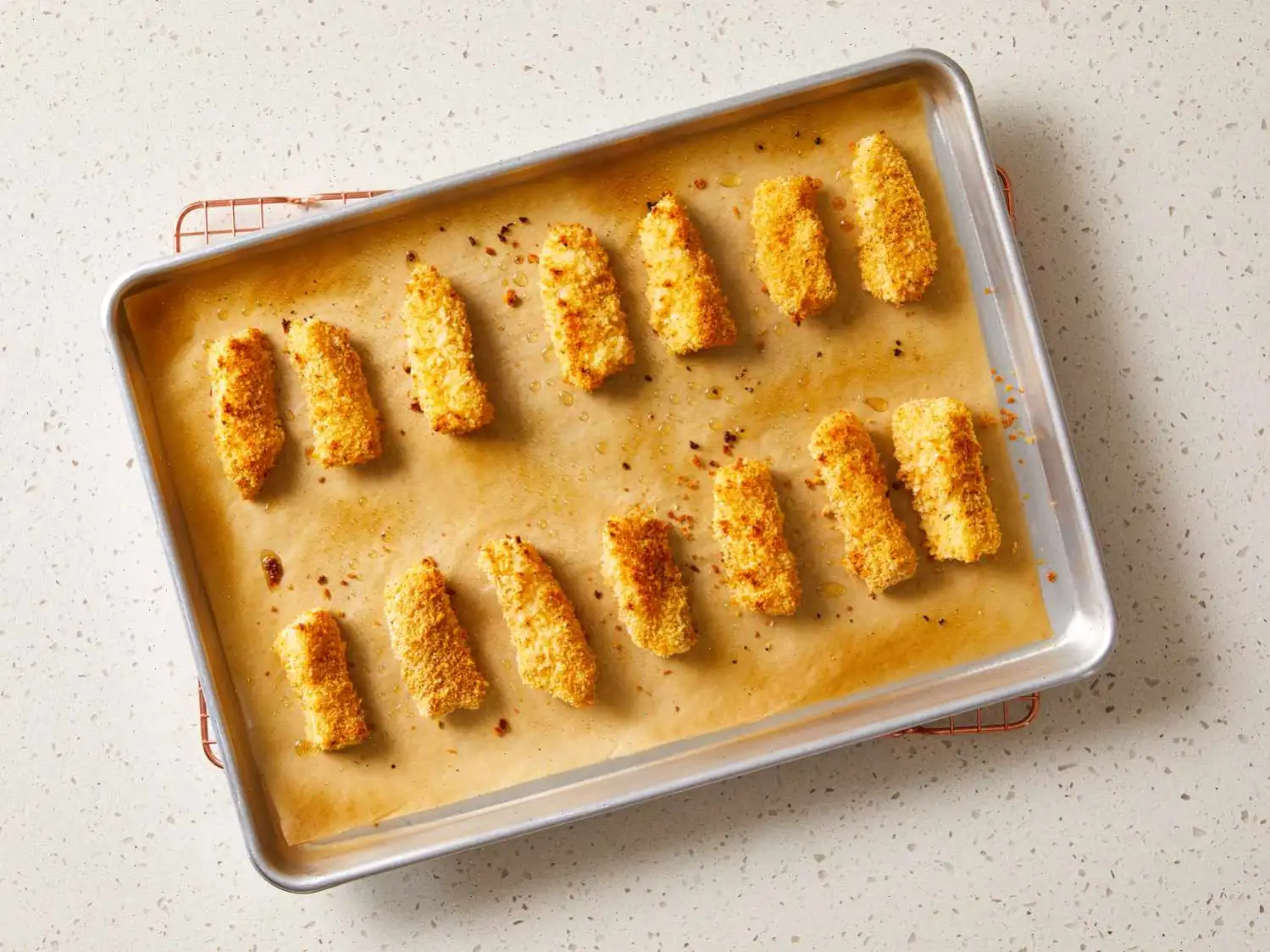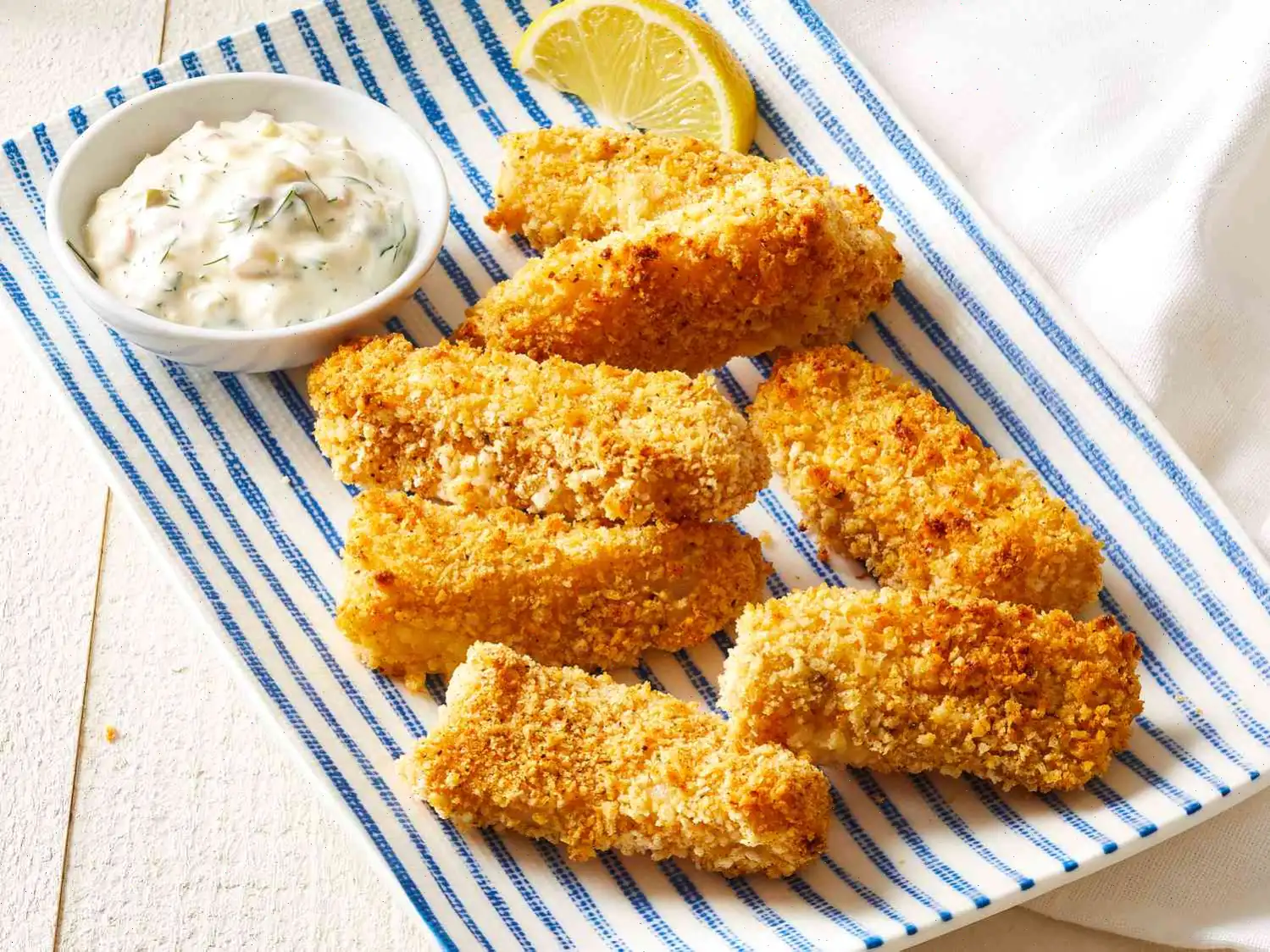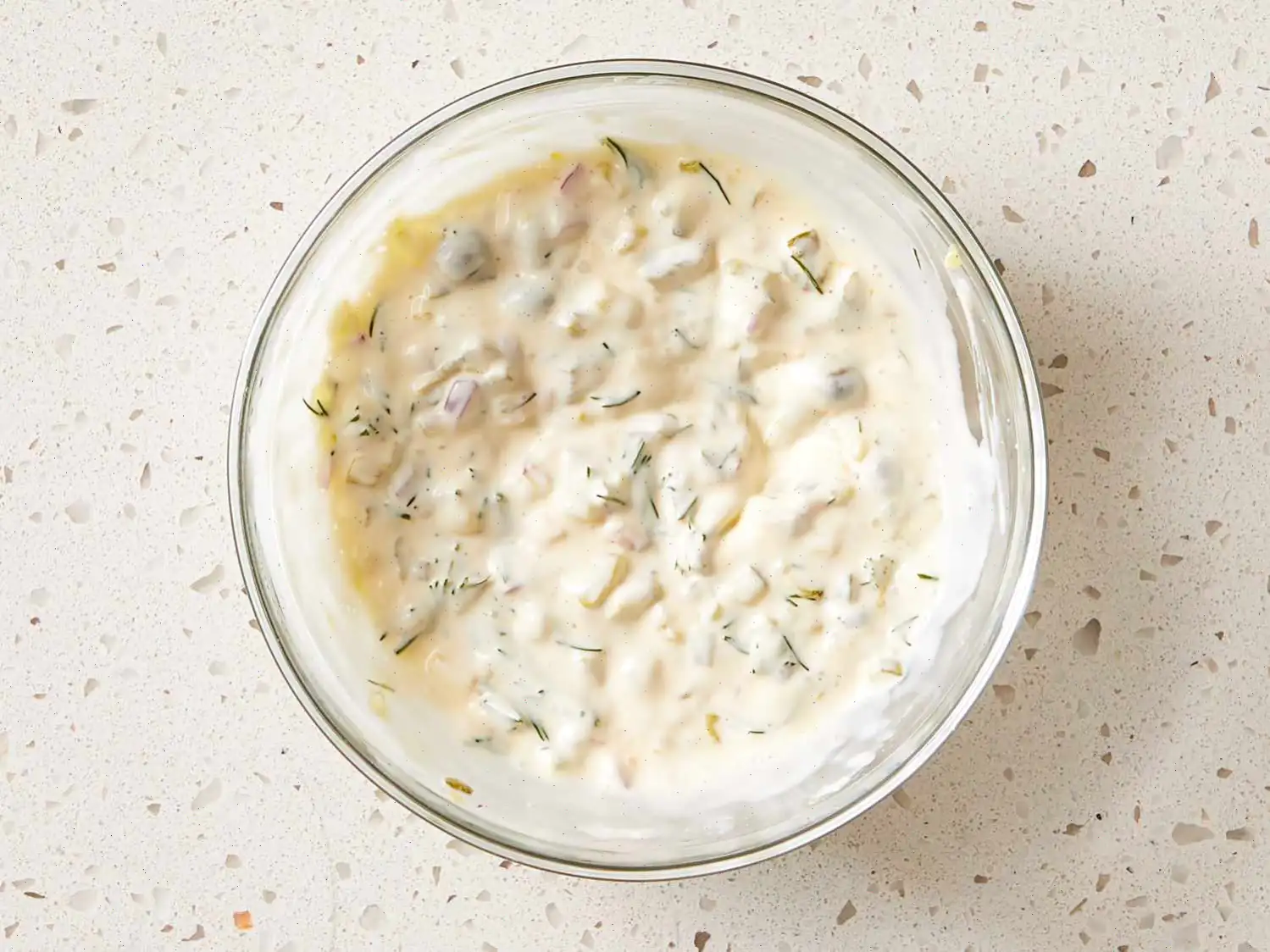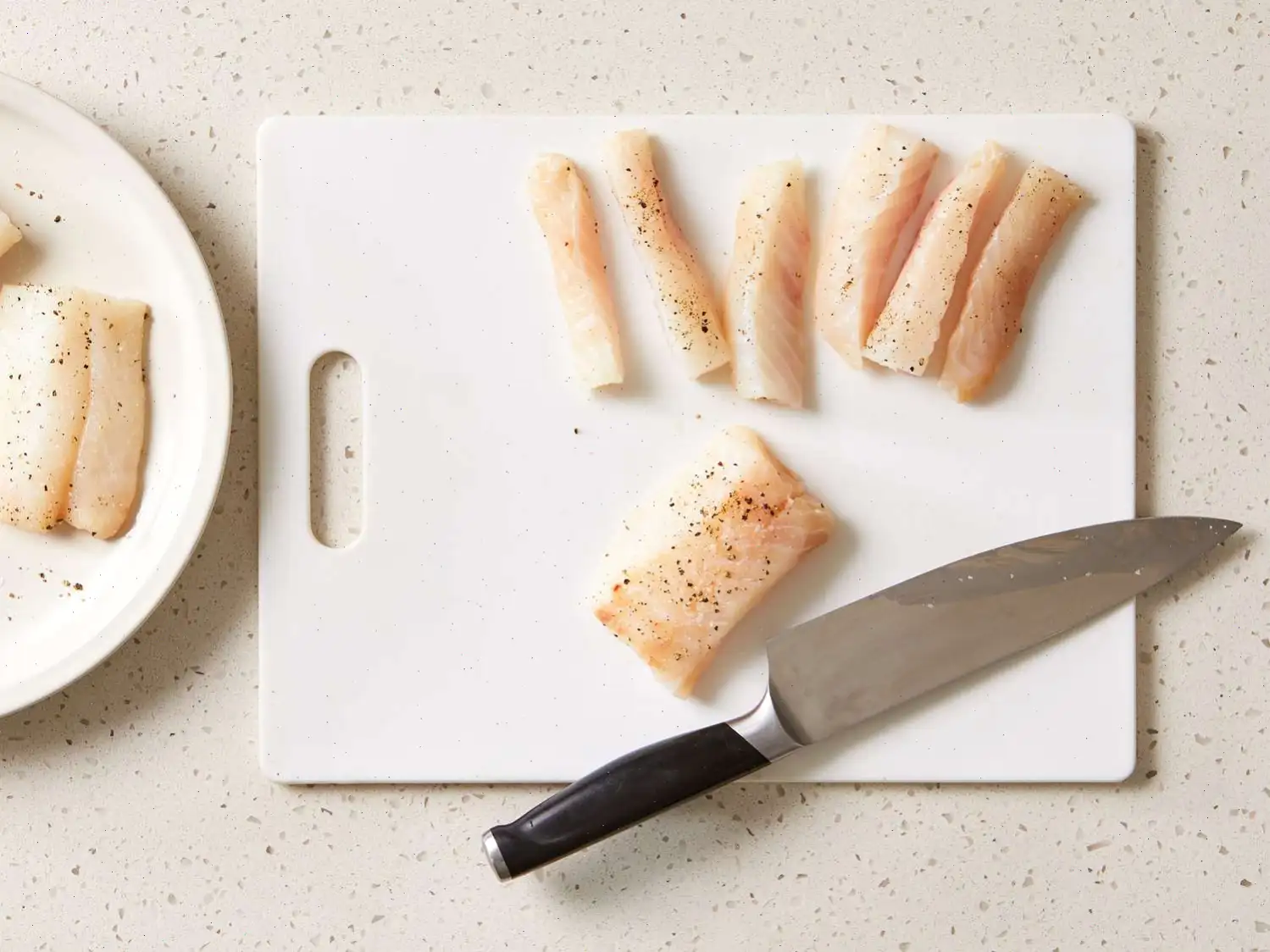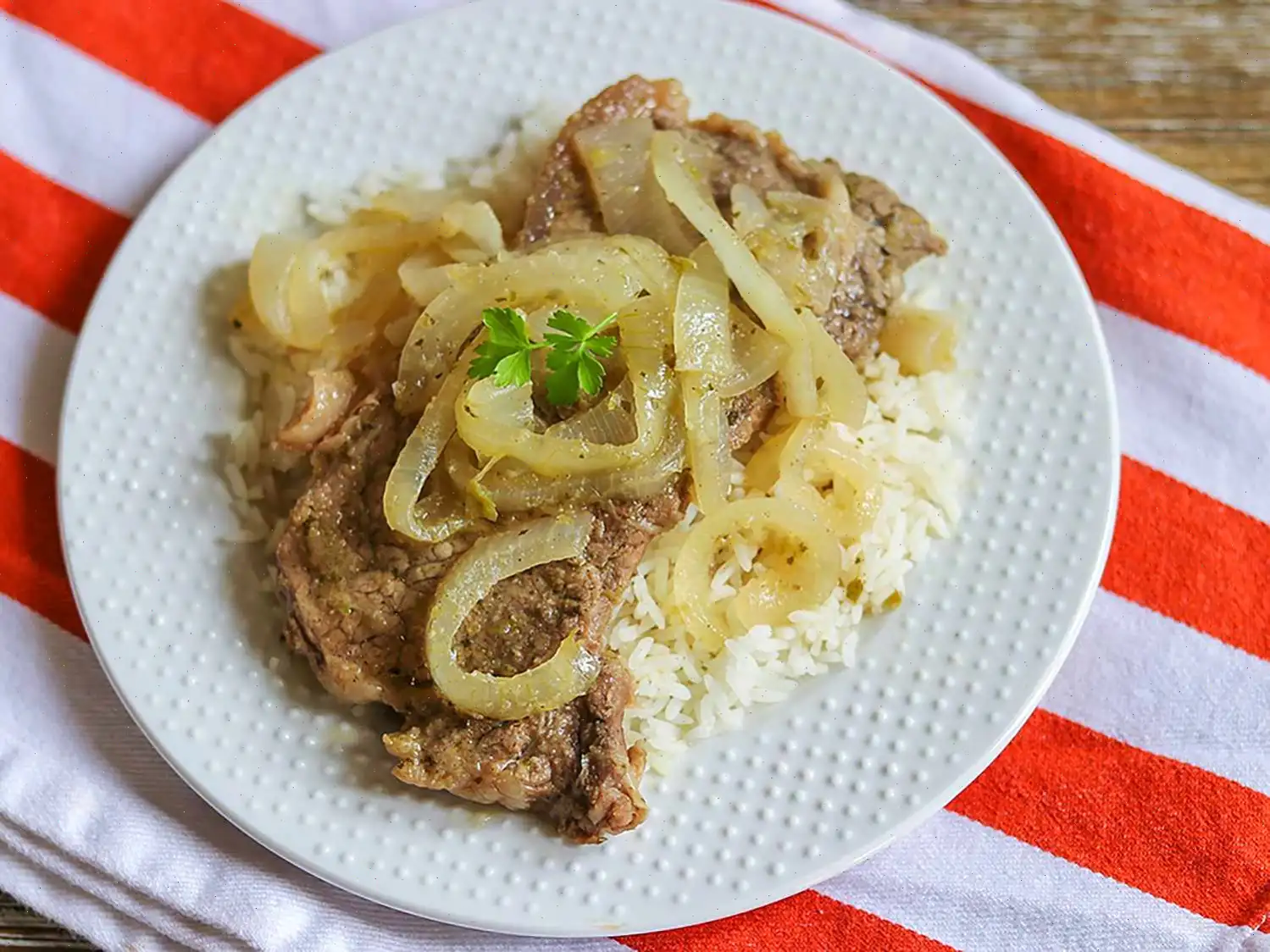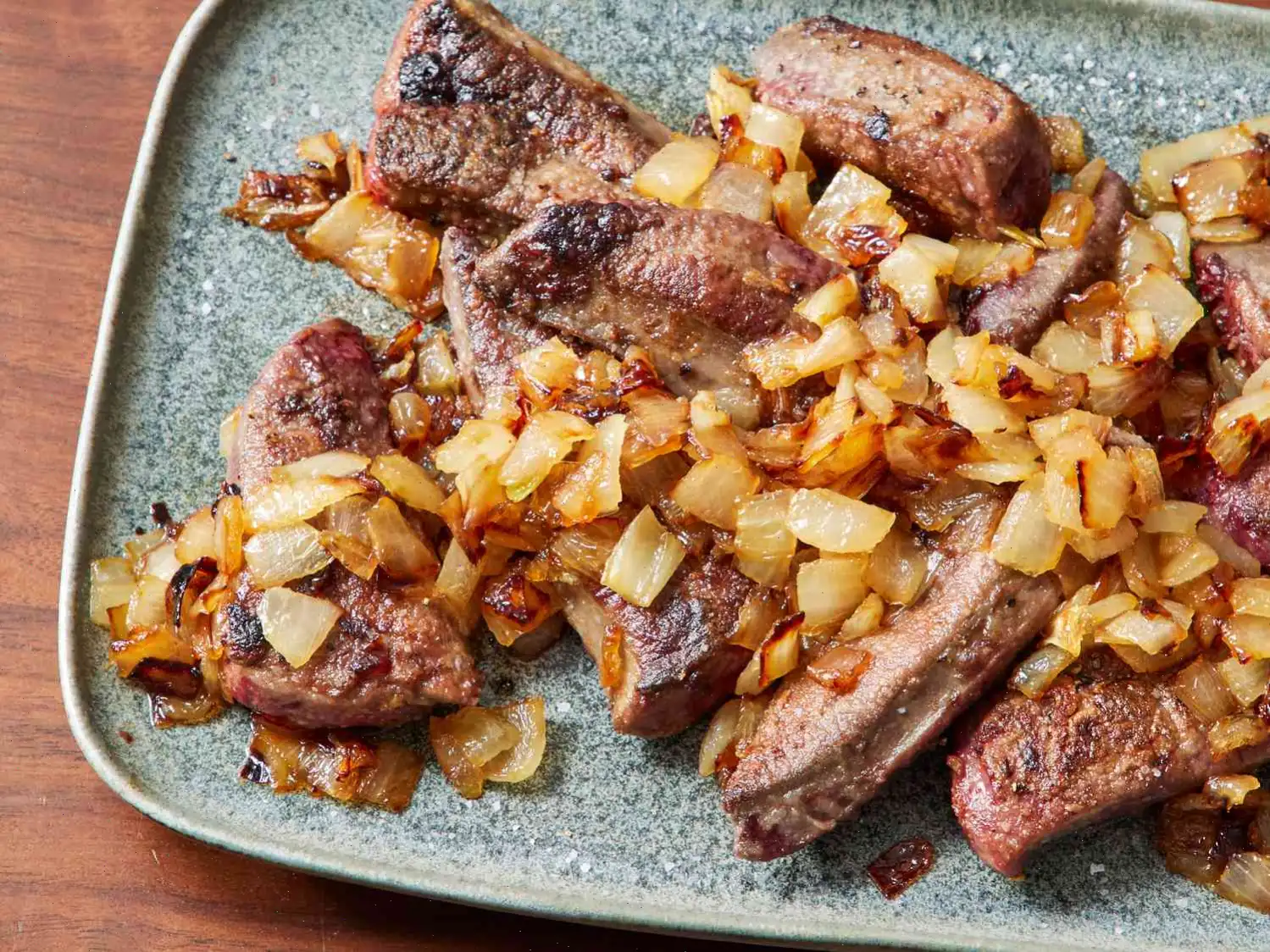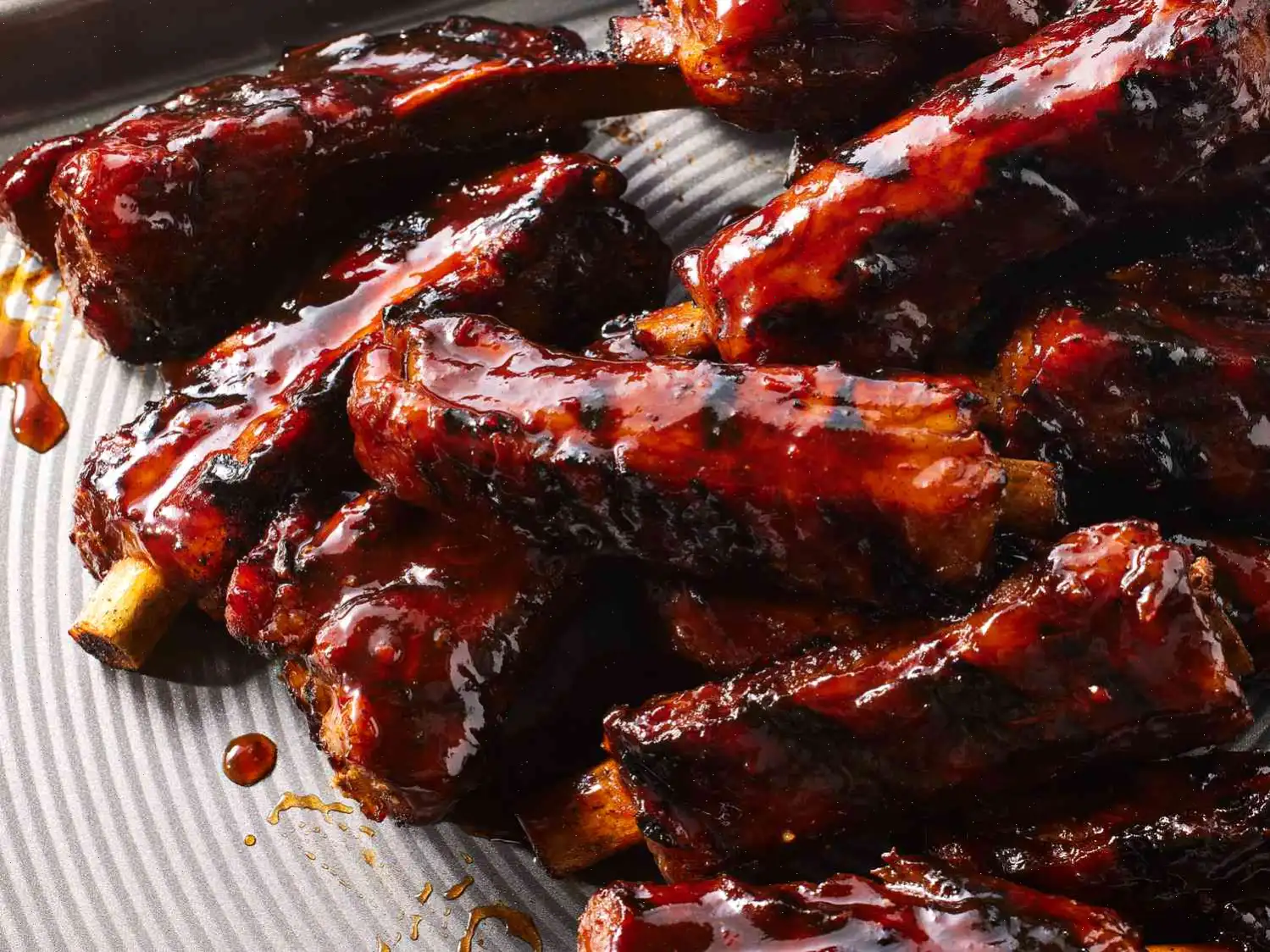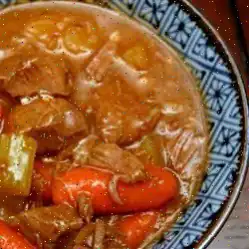
Homemade Fish Sticks Recipe
"I loved frozen fish sticks as a kid, but these are so much better," says recipe developer and test kitchen expert Juliana Hale. Try this homemade fish stick recipe next time you need a fun, fast, and kid-friendly weeknight meal.
How to Make Fish Sticks
You'll find a detailed ingredient list and step-by-step instructions in the recipe below, but let's go over the basics:
Ingredients for Fish Sticks
These are the ingredients youll need to make this homemade fish stick recipe:
- For the fish sticks: white fish, salt and pepper, bread crumbs, Old Bay seasoning (or Cajun or lemon-pepper seasoning), an egg, water, and all-purpose flour.
- For the tartar sauce: mayonnaise, pickle relish, red onion, fresh or dried dill, capers, and lemon juice.
Best Fish for Fish Sticks
Choose a firm, meaty, white fish for this recipe. Good choices include cod, halibut, or catfish. Fresh is best, but frozen is fine just make sure its thawed before you start cooking.
Test Kitchen Tips
- For gluten-free fish sticks, use gluten-free Panko and gluten-free baking mix for the flour.
- You can use any seasoning blend you like here. Chili powder or barbecue seasoning would work great.
Can You Make These Fish Sticks In the Air Fryer?
Yes! Its quite easy. To make the fish sticks in the air fryer:
- Preheat the air fryer to 390F (200C).
- Cook the fish sticks in batches until browned (about 7 minutes), turning once halfway through the cooking time.
Can You Deep Fry These Fish Sticks?
Of course, fish sticks can also be deep-fried. To deep fry the fish sticks:
- Heat one cup vegetable oil in a small saucepan until it shimmers.
- Fry the fish sticks, 4 at a time, until golden brown, 2 to 3 minutes on each side.
- Drain on paper towels. Keep cooked fish sticks warm in a 200F (93C) oven while frying the remaining fish sticks.
What to Serve With Fish Sticks
In addition to the homemade tartar sauce, these fish sticks pair perfectly with a remoulade or even ketchup. As far as side dishes go, you cant go wrong with crowd-pleasing French fries or classic coleslaw.
How to Store Fish Sticks
Store the leftover fish sticks in an airtight in the refrigerator for up to four days. Reheat in the oven or in the air fryer to keep them crispy.
Ingredients
This recipe was developed at its original yield. Ingredient amounts are automatically adjusted, but cooking times and steps remain unchanged. Note that not all recipes scale perfectly.
- For the Fish Sticks: 1 pound cod, halibut, or catfish filets, thawed if frozen.
- 1/2 teaspoon salt.
- 1/4 teaspoon freshly ground black pepper.
- 1 cup panko bread crumbs.
- 2 teaspoons Old Bay seasoning.
- 1 large egg.
- 1 tablespoon water.
- 1/3 cup flour.
- Cooking spray.
- 1 lemon, cut into wedges.
For the Tartar Sauce:
- 1/3 cup mayonnaise.
- 2 tablespoons pickle relish (sweet or dill).
- 1 tablespoon finely chopped red onion.
- 1 1/2 teaspoons chopped fresh dill.
- 1 teaspoon capers (optional).
- 1/2 teaspoon freshly squeezed lemon juice.
Directions
- Gather all ingredients.
- Preheat the oven to 375F (190C). Line a baking sheet with parchment paper or use a silicone baking mat.
- Blot fish dry with paper towels. Season fish with salt and pepper. Cut filets crosswise in 1-inch strips.
- Combine panko and Old Bay seasoning in a shallow dish. Beat together egg and water in a second shallow dish. Place flour in a third shallow dish.
- Dip fish pieces in flour to coat, shaking off excess, then in egg mixture, then in panko. Place breaded fish sticks on the prepared baking sheet.
- Coat fish sticks generously with cooking spray. Bake freshly breaded or frozen fish sticks until golden brown, 18 to 20 minutes, turning once halfway through baking time.
- For the Tartar Sauce: In a small bowl, whisk together mayonnaise, pickle relish, onion, dill, capers (if using), and lemon juice. Chill for at least 2 hours before serving and up to 1 week.
- Serve fish sticks with tartar sauce and lemon wedges.
Recipe Tip
You can use Cajun seasoning or lemon-pepper seasoning instead of Old Bay for variation. You can substitute the fresh dill with 1/2 teaspoon dried dill.
Freezing Tip:
Once fish sticks are fully prepared (Step 5), you can easily freeze them. Simply place the baking sheet with the breaded fish sticks in the freezer and freeze until firm, about 1 hour. Transfer frozen fish sticks to a freezer , label, and freeze for up to 1 month.
Nutrition Facts (per serving)
- Calories: 486
- Fat: 18g
- Carbs: 51g
- Protein: 35g
- Cholesterol: 116mg
- Sodium: 1027mg
- Dietary Fiber: 7g
- Vitamin C: 110mg
- Calcium: 135mg
- Iron: 4mg
- Potassium: 709mg
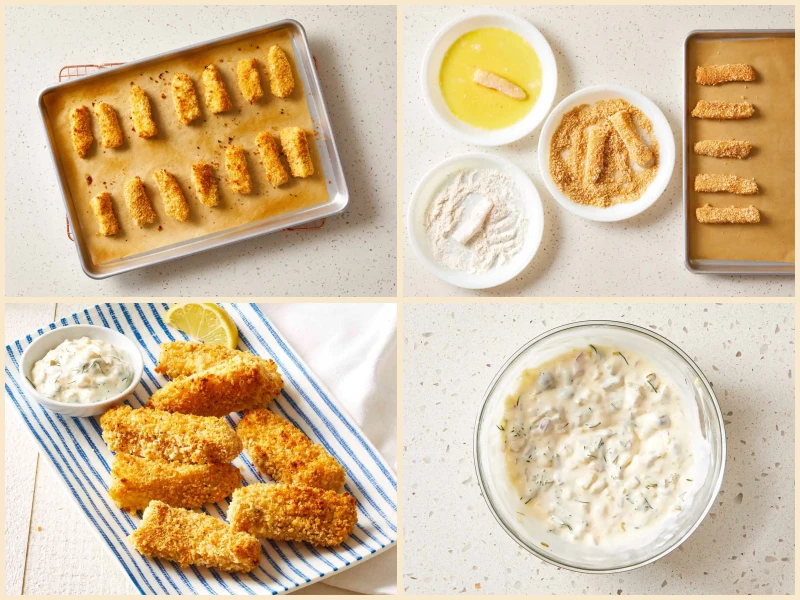
The Story Behind Fish Sticks
Fish sticks, a beloved comfort food in many households, trace their origins back to the early 20th century. While the exact origin is debated, the concept became popular in the 1950s when processed frozen foods began to enter American kitchens. The idea was simple: to make fish more accessible and convenient for families, particularly children, who were often reluctant to eat whole fish fillets. Initially, cod and haddock were the primary choices, but over time, other firm white fish varieties like halibut and catfish became common.
Regional Variations
Though fish sticks are widely associated with American cuisine, regional differences exist. In the United Kingdom, they are often served with mashed potatoes and peas, and are sometimes coated with cornflakes for extra crunch. In Scandinavian countries, fish sticks are paired with remoulade or creamy dill sauces, reflecting local flavor preferences. In the southern United States, catfish is a popular base for homemade versions, frequently seasoned with Cajun spices to add a distinctive kick.
How Fish Sticks Differ from Similar Dishes
Fish sticks are often compared to fish fillets, fish fingers, or tempura fish. Unlike fish fillets, which are larger and typically baked or fried without breading, fish sticks are small, uniform, and breaded for consistent crispiness. Compared to tempura, which uses a light batter and is associated with Japanese cuisine, fish sticks rely on panko or breadcrumbs, giving them a thicker, crunchier coating. Fish fingers, a British term, are very similar but tend to be thinner and shorter than American-style fish sticks.
Where Fish Sticks Are Typically Served
Fish sticks are a popular choice in casual dining and home settings. They are commonly served in school cafeterias, fast-food outlets, and family-friendly restaurants. At home, they often appear as a quick weeknight meal, paired with classic sides such as French fries, coleslaw, or a simple salad. They are also a favorite at picnics and lunchboxes due to their portability and ease of reheating.
Interesting Facts About Fish Sticks
- The first commercially frozen fish sticks were introduced in the 1950s, revolutionizing the convenience food industry.
- Despite being considered an American classic, the concept of breaded fish traces back to European recipes from the 19th century.
- Fish sticks are high in protein and can be a healthier alternative to fried fast-food options when baked at home.
- They have inspired numerous variations, including gluten-free, spicy, and even vegan alternatives using plant-based fish substitutes.
- Fish sticks have appeared in pop culture and childrens media, cementing their status as a nostalgic favorite for multiple generations.
You can listen to this recipe in AI audio format. Simply click the play button below to listen to the content in a format that suits you best. It’s a great way to absorb information on the go!
FAQ about Homemade Fish Sticks Recipe
Comments
Barbara White
03/02/2025 10:37:33 PM
The recipe was simple to follow and turned out well. However, I struggled to achieve a truly crispy crust on dishes of this kind.
Carol Robinson
09/08/2022 11:58:46 AM
This is a must-have recipe! It has a wonderful flavor and is easy to follow.


